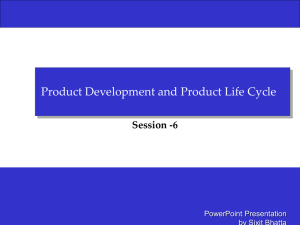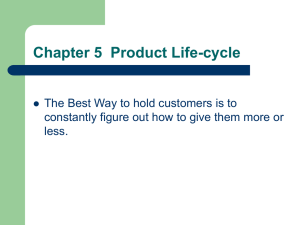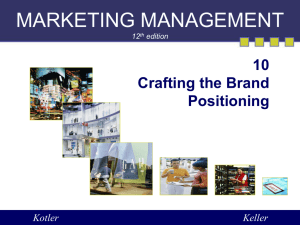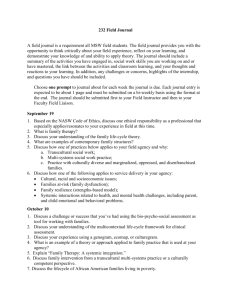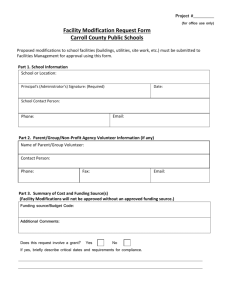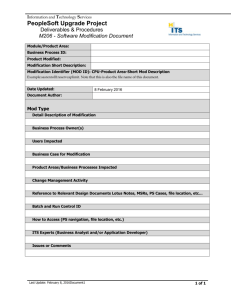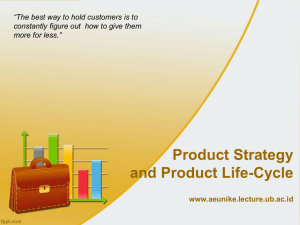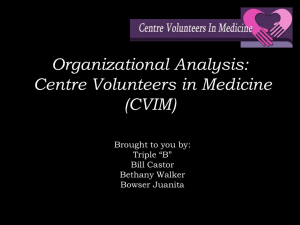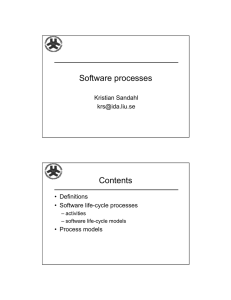11. New Product Development & the Product Life Cycle
advertisement
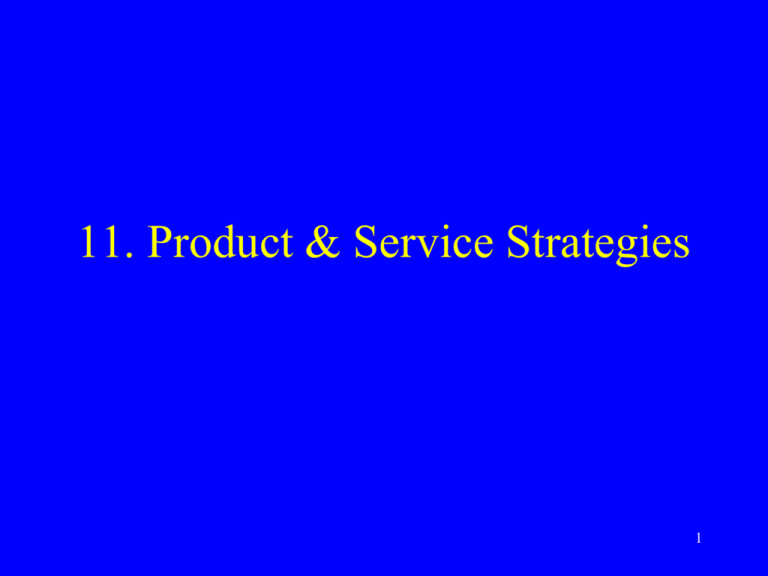
11. Product & Service Strategies 1 Products • Product: tangible goods vs. services • Levels of product – Class & form – Core, actual, augmented • Product line – Product line length – Add new products to existing lines through • Product line stretching • Product line filling • Product mix – Width – Length – Depth – Consistency 2 Product Classifications • Consumer products (B2C) – – – – Convenience products (impulse, staple, & emergency) Shopping products Specialty products Unsought products • Industrial products (B2B) – Process consumables • Raw materials and component parts – Capital items • Factory installations & accessory equipment − Support consumables • Supplies/MRO items & business services 3 Product Life-Cycle • Product life-cycle – Can describe product class, product form, or brand – Can be applied to styles, fashions, and fads • Five distinct stages – New product develop. stage – Maturity stage – Introduction stage – Decline stage – Growth stage • Framework for describing how products & markets work – Drawbacks indicate need for careful application 4 Product Life-Cycle Stages • Introduction – Profits negative or low – Prices high – Few competitors • Growth – Sales climb quickly – New competitors may enter • Profit growth eventually slows, then levels off – Prices fall only slightly – Product modification may begin – Goal of promotion shifts – Trade-off: high market share vs. high current profit 5 Product Life-Cycle Stages (Cont.) • Maturity stage – Sales growth slows, then levels off – Management practices include: • Market modification • Further product modification • Marketing mix modification • Decline stage – Sales and profits decline – Required decisions: harvest or delete/drop 6 Classification of Services • Service provider – Government, private nonprofits, businesses • Goods-services continuum • Service characteristics – – – – Intangibility Inseparability Inconsistency Perishability 7 Service Quality • Strategies – Service-profit chain (relates to quality of service encounter) • Internal service qualitySatisfied employees Greater service valueSatisfied customers Profits & growth • Assessing quality: Gap analysis – Expectations vs. experience 8 Service Quality (Cont.) • Internal marketing • Interactive marketing • Major marketing tasks for service firms: – Increase competitive differentiation • Through branding/addition of supplementary services to core service product – Integrate capacity management with efforts to build demand • E.g., through off-peak pricing 9
